The latest drought monitor was released on June 2, 2002. It shows that Colquitt County is still abnormally dry and the weather forecast is showing hot, dry conditions in the near future. Dr. Bob Kemerait, UGA Plant Pathologist, has informed county Extension agents today (June 5, 2022) that soybean rust has been found in Lowndes County.


Cotton: The cotton crop ranges from just planted to 8 leaf stage in Colquitt County. Growers are starting weed control strategies in their fields and thrip pressure is starting to decrease. Some growers are planting late cotton behind wheat. The wheat harvest is nearing completion.
Dr. Phillip Roberts, UGA Cotton Entomologist, made a visit to Colquitt County this past week to evaluate some Thryvon plots and the overall cotton insect situation.
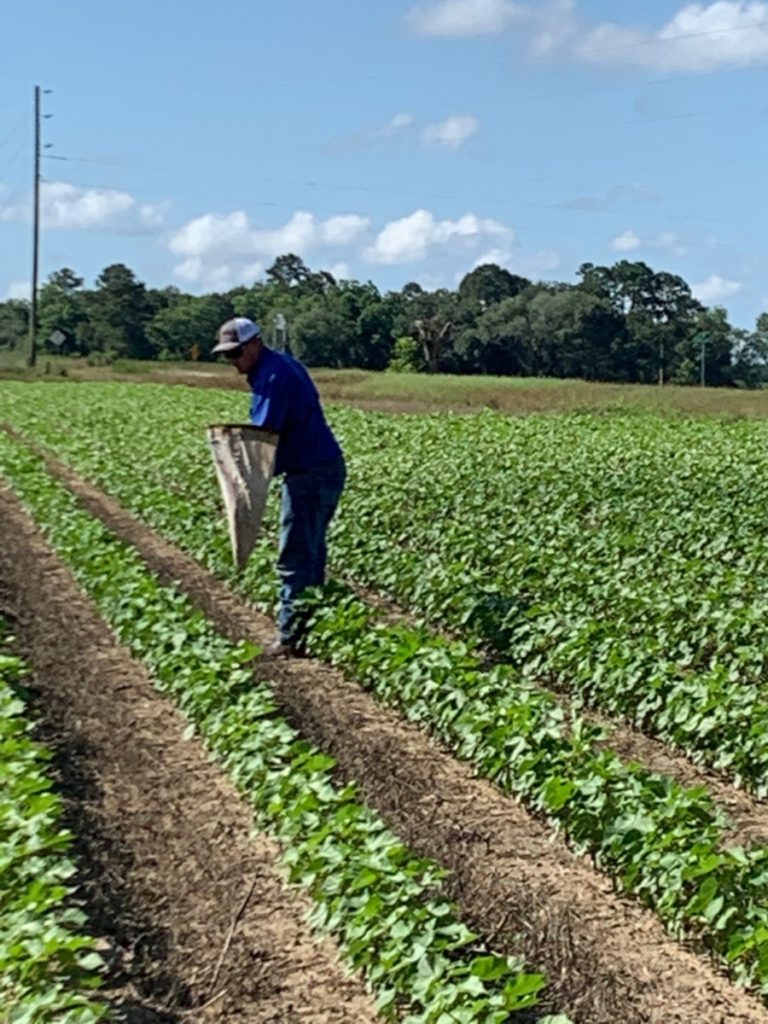
We were finding plant bugs in cotton fields that were in the first week of squaring. Scouts and producers need to be aware of sweep net and drop cloth thresholds for plant bugs. The thresholds are below.
Sweep Net and Drop Cloth Thresholds:
Third week of squaring through bloom: Drop Cloth: 3 plant bugs/6 row feet, Sweep Net: 15 plant bugs/100 sweeps
First 2 weeks of squaring: Drop Cloth: 1 plant bug/6 row feet, Sweep Net: 8 plant bugs/100 sweeps
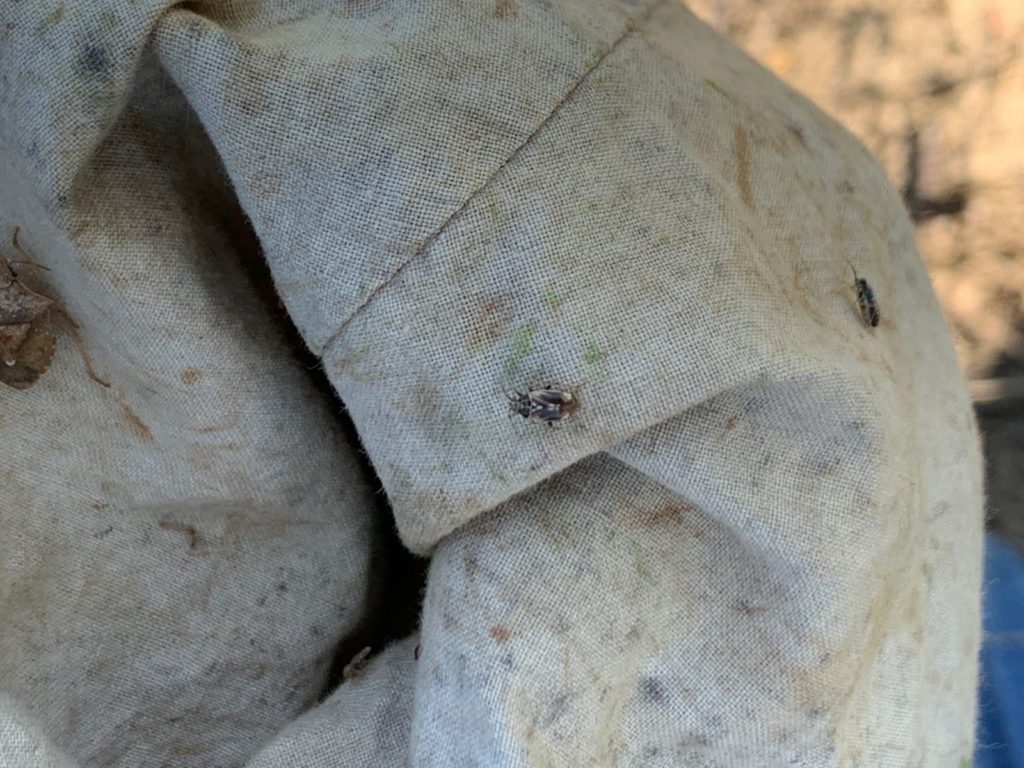
Snails in Cotton
I have been getting a question or two about snails (Bulimulus sporadicus) in cotton. According to Dr. Phillip Roberts, UGA Cotton Entomologist, snails do not impact cotton yield and there is not an economical control option in row crops. If you have any questions please let me know. Below are examples of snails on cotton.
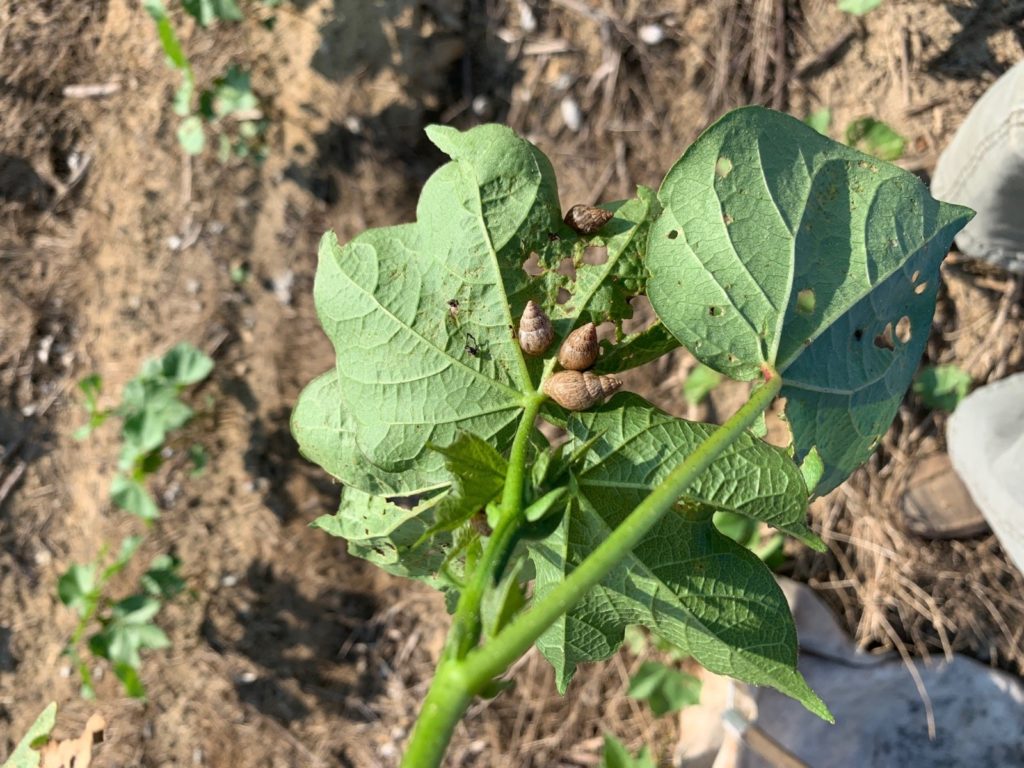
Cotton Irrigation: It is hot and dry!!! Below is an irrigation schedule from emergence to first bloom for cotton. According to the UGA Weather Station at the Sunbelt Ag Expo, the evapotranspiration rates have ranged from 0.19 to 0.25 inches per day.
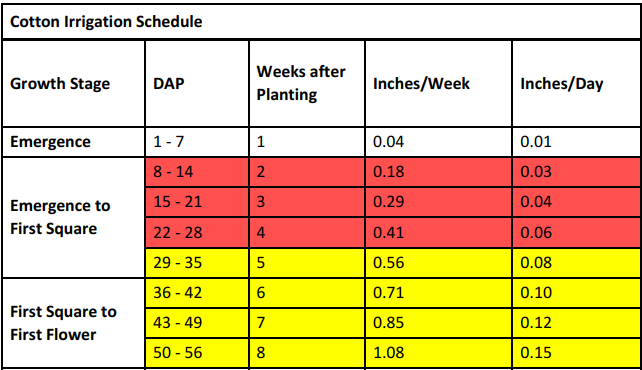
Late Cotton Suggestions: Research in Georgia has indicated that yield potential usually starts to diminish with plantings after the first week to 10 days or so of June. The relative success of late-planted cotton is certainly dependent upon the weather in September and October as well as the date of the first frost, but we can also impact it with a couple of management decisions. Plant only 2 to 3 good quality seeds/ft of row to alleviate the complications of late plantings and dense stands. Don’t try to rush the crop by over fertilizing with N. Use minimum soil applied rates (usually 25 to 30 percent less than on full season) and monitor nitrate levels with petiole tests to detect need for late sidedress or foliar N application. P and K could be applied to the previous crop, except for sandy land, to save time, especially if a starter is used to give N for early season growth.
Peanuts: The peanut crop is ranges from just planted to early bloom. I have been seeing some Tomato Spotted Wilt in late April planted peanuts. Below shows classic symptoms of Tomato spotted wilt virus (vectored by thrips) on young peanut plants. Once the furrow is closed, almost all management decisions are made.
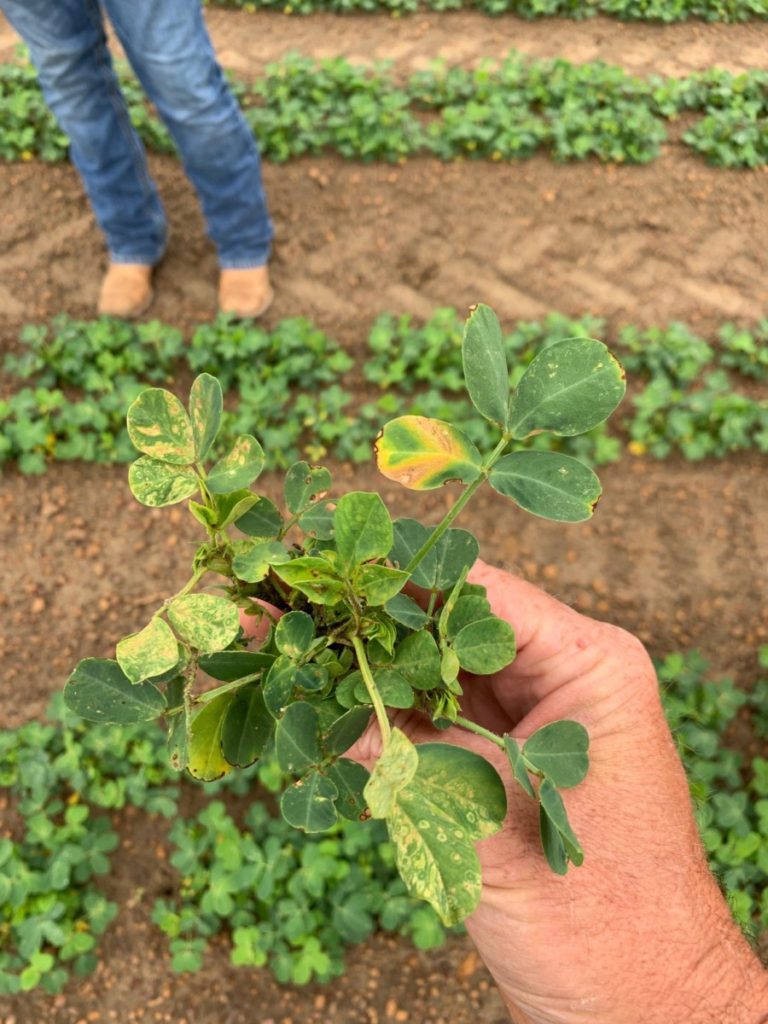
Peanut Cracking Sprays. I have been receiving numerous questions about peanut cracking sprays. Dr. Eric Prostko, UGA Weed Specialist, suggests the following tips.
1) If grower wants to use the 3 lb/gal formulation of paraquat (i.e. Helmquat or Gramoxone 3SL), the normal application rate in these tank-mixtures is 8 oz/A (0.1875 lb ai/A).
2) If a grower wants to use Basagran 4SL (bentazon) instead of Storm 4SL (bentazon + acifluorfen), I would suggest using 8 oz/A of Basagran 4SL.
3) If a grower wants to make his own Storm, I would suggest the combination of Ultra Blazer 2SL @ 16 oz/A + Basagran 4SL @ 8 oz/A.
4) I am not a huge fan of using paraquat + Dual Magnum or any other Group 15 herbicide without some Basagran or Storm to cool it down some on the peanut plant.
5) No adjuvants are needed when Dual Magnum or Outlook are used (i.e. oil-based formulations) but NIS @ 0.25% v/v (1 qt/100 gallons) is suggested when using Anthem Flex, Warrant, or Zidua.
Pegging Zone Sampling in Runner Peanut
Peanuts have a high calcium requirement. Calcium must be available to the developing peg and pod in a water soluble form in the pegging zone area. If you need to apply calcium (in the form of gypsum, landplaster) it needs to be applied at early flowering. Pull the sample slightly offset of the peanut row about 3 inches deep. Pegging zone samples need to show 500 pounds of soil test calcium. If you are at the 500 mark or better and you have a 3 to 1 calcium to potassium ratio then calcium requirements should be met. If you do not meet EITHER of these requirements then you need to apply 1000 lb/a gypsum at early bloom. Also, all peanuts grown for seed should automatically receive this gypsum application, regardless of soil test calcium levels. Soil sample bags are available at the Extension Office if you would like to do pegging zone tests.
Peanut Irrigation — I have received a question or two about peanut irrigation. The chart below illustrates the water requirements (inches per week and per day) for peanuts for the first 6 weeks after planting.
| Days After Planting | Weeks After Planting | Inches Per Week | Inches Per Day |
| 1-7 | 1 | 0.08 | 0.01 |
| 8-14 | 2 | 0.26 | 0.04 |
| 15-21 | 3 | 0.39 | 0.06 |
| 22-28 | 4 | 0.55 | 0.08 |
| 29-35 | 5 | 0.76 | 0.11 |
| 36-42 | 6 | 0.95 | 0.14 |
Corn: The corn crop is at or nearing tassel stage of development. Southern Rust has been confirmed in Wayne and Grady Counties this week. I have been finding common rust in Colquitt County, (June 4, 2022). Growers need to ready to protect their crop from rust.

Below is an example of common rust from Colquitt County this past week.
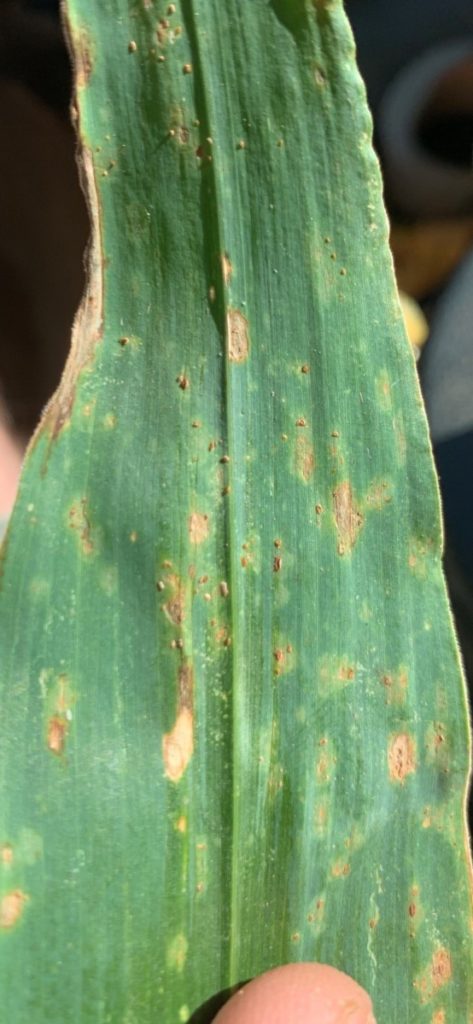
Below are a few comments from Dr. Bob Kemerait, UGA Plant Pathologist, on the subject of corn fungicides.
- Single mode-of-action products like Tebuconazole, Quadris, and Domark are “good” but have a two-week protective window.
- Mixed mode of action products like Stratego YLD, Aproach Prima, Delaro, and a number of other fungicides have better efficacy and a three-week protective window than do single mode of action products. Product like these work well, especially when risk is heightened but fields are spray before rust is established in a field.
- I am always asked, and I am careful in my words, “Which fungicide is best for rust on corn?” All mixed mode of action products work BEST and often WELL when sprayed early ahead of disease infection and development. It is my experience that the products that have the biggest impact on southern corn rust are Trivapro, Headline AMP and Veltyma. They tend to look very good in my trials when rust is particularly severe; all fungicides can perform well when applied ahead of disease.
Below is a good comparison between common and Southern Rust from the publication Southern vs. Common Rust in Corn – FACT SHEET #2019002

Irrigation requirements for corn is reaching 0.32 inches per day as we reach the tassel and pollination stages of development. The table below illustrates corn irrigation requirements.

If you have any questions please contact your local county Extension Agent.
Thanks,
Jeremy M. Kichler
Colquitt County Extension Agent.
